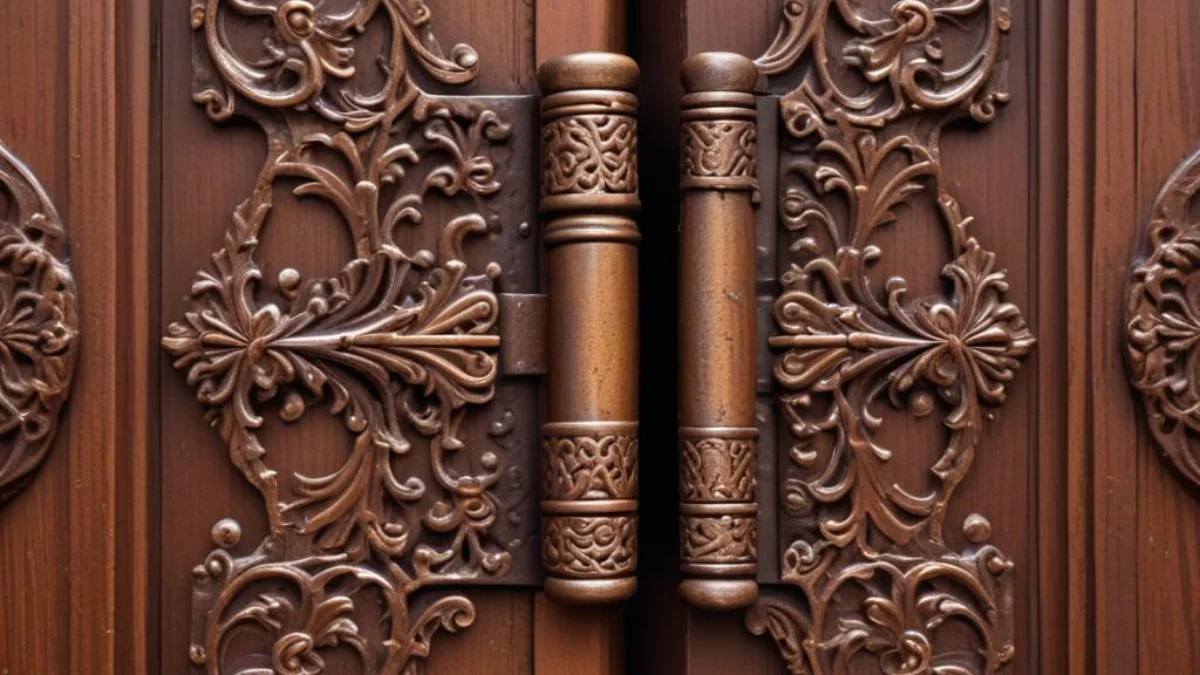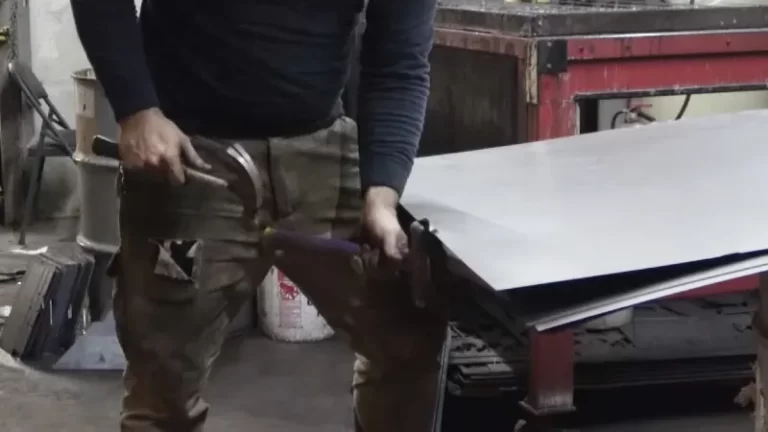Remove Wood Stain from Metal: Your Ultimate Guide Is Here!
There’s nothing more frustrating than completing a beautiful wood staining project, only to find errant drips and smudges marring your metal hardware. It’s a common problem that can make a finished piece look sloppy and unprofessional. Whether it’s on door hinges, furniture handles, or deck railings, that dried-on stain can seem impossible to remove without causing damage.
This guide will walk you through the safest and most effective methods to remove wood stain from various metal surfaces. We’ll explore why this happens and provide step-by-step solutions to restore your metal fixtures to their original, pristine condition. Say goodbye to unsightly stain marks and hello to a flawless finish.
You'll Learn About
Understanding the Problem: Why Wood Stain Sticks to Metal
Wood stain is designed to penetrate porous wood surfaces, but its pigments and binders can also create a strong bond with non-porous materials like metal. The type of stain—oil-based or water-based—plays a significant role in how it adheres and how difficult it is to remove. Oil-based stains, in particular, can be stubborn once they’ve cured.
Accidents happen during application, from a shaky hand to an overloaded brush. Splatters, drips, and over-brushing are common culprits that lead to stained metal. The key to successful removal is acting quickly and using the right method for the type of metal and stain you’re dealing with.
Different Metals, Different Rules: What You Need to Know
Not all metals are created equal, and some are more susceptible to damage from certain cleaning agents than others. Using the wrong chemical or an overly abrasive technique can lead to scratches, discoloration, or even corrosion. It’s crucial to identify the type of metal you are working with before attempting any stain removal.
For instance, harsh chemicals that work on stainless steel could permanently damage softer metals like aluminum or brass. Similarly, abrasive scrubbing might be fine for durable iron but could ruin the finish on a delicate, coated fixture. Always test any cleaning solution on a small, inconspicuous area first.
Immediate Action: Tackling Wet Wood Stain on Metal
If you notice a wood stain spill on metal while it’s still wet, you’re in luck. Acting fast is the most critical step to prevent a permanent blemish. Quick action can save you a lot of scrubbing and potential frustration later on.
For water-based stains, a simple cloth dampened with warm, soapy water is often all you need. Wipe the stain away gently, rinse the area with a clean, damp cloth, and dry it thoroughly to prevent water spots. For oil-based stains, you’ll need a solvent. A rag lightly dampened with mineral spirits or paint thinner will typically dissolve the wet stain without harming the metal. Always wear gloves and work in a well-ventilated area when using solvents.
Conquering Dried Stains: Methods That Actually Work
Dried wood stain presents a greater challenge, but it’s not an insurmountable one. The approach you take will depend on the type of metal and the severity of the stain. Start with the gentlest method and work your way up to more aggressive solutions only if necessary.
The Gentle Approach: Household Solutions for Light Stains
For minor, dried-on stains, you might not need to reach for harsh chemicals. Several common household items can be surprisingly effective at breaking down wood stain without damaging the underlying metal surface.
A paste made from baking soda and water can act as a mild abrasive. Apply the paste to the stain, let it sit for a few minutes, and then gently scrub with a soft cloth or a non-abrasive sponge. Another option is a mixture of vinegar and water; the mild acidity can help dissolve the stain. Always rinse the metal thoroughly with clean water and dry it completely after using any of these methods.

Intermediate Solutions: Solvents and Commercial Cleaners
When household remedies don’t cut it, it’s time to move on to more potent solutions. Solvents are highly effective, particularly for oil-based stains. Mineral spirits and lacquer thinner are common choices that can dissolve dried stain.
Apply a small amount of the solvent to a clean cloth and rub the stained area. You may need to apply some pressure, but avoid scrubbing so hard that you scratch the metal. Remember to wear protective gloves and ensure proper ventilation. There are also various commercial stain and paint removers available, like CitriStrip, which can be effective. Always follow the manufacturer’s instructions carefully.
The Heavy Hitters: When to Use Abrasives and Chemical Strippers
For the most stubborn, set-in stains, you may need to resort to more aggressive tactics. This is often the case with older stains or on textured metal surfaces where the stain has settled into crevices. Extreme caution is advised with these methods, as they carry the highest risk of damaging the metal.
Using a very fine-grade steel wool (#0000) or a non-scratch abrasive pad can physically remove the stain. Always rub gently and in the direction of the metal’s grain, if it has one. For very tough situations, a chemical paint stripper might be necessary. Apply it sparingly and according to the product’s directions, then carefully scrape away the loosened stain with a plastic scraper. In some cases, such as dealing with intricate ironwork like on a staircase, you might need to consider more advanced solutions like those discussed when you want to remove iron balusters.
Metal-Specific Cleaning Guide Table
To simplify the process, here is a handy table outlining the best methods for different types of common metals. Always start with the gentlest method and proceed with caution.
| Metal Type | Gentle Method | Intermediate Method | Aggressive Method (Use with Caution) |
|---|---|---|---|
| Stainless Steel | Baking soda paste or vinegar solution. | Rubbing alcohol or a commercial stainless steel cleaner. | Fine-grade abrasive pad (rub with the grain). |
| Aluminum | Mild soap and water. | Mineral spirits for oil-based stains. | Avoid abrasives; use a chemical stripper formulated for aluminum. |
| Brass/Bronze | Lemon juice and salt paste. | Ammonia and water solution (50/50). | Brasso or a similar metal polish with a soft cloth. |
| Painted/Coated Metal | Mild soap and water. | Test mineral spirits on a hidden spot first. | Avoid abrasives and strong solvents as they can remove the paint. |
| Wrought Iron | Mild detergent and a soft brush. | Mineral spirits or lacquer thinner. | Wire brush for stubborn spots, followed by rinsing and drying promptly to prevent rust. |
Prevention is Better Than Cure: Tips to Avoid Stains
The best way to deal with wood stain on metal is to prevent it from happening in the first place. A little preparation can save you a lot of time and effort in cleanup. Protecting your metal hardware before you begin your staining project is a simple yet crucial step.
Use painter’s tape to carefully cover any metal hardware that is close to the wood you’ll be staining. For hardware that can be easily taken off, like handles or knobs, it’s best to remove them entirely before you start. This not only protects the metal but also allows you to get a more even and professional-looking stain finish on the wood. This same principle of careful removal applies to other home improvement projects, like when you need to remove a single paving slab without disturbing the surrounding area.
What If a Stain Persists?
In rare cases, a stain might seem impossible to remove completely, especially on older or more porous metal surfaces. If you’ve tried all the appropriate methods for your type of metal and a faint discoloration remains, you may need to consider refinishing the metal piece itself.
For painted metal, a light sanding and a fresh coat of paint can cover the stain and restore the finish. For unpainted metals, polishing the entire surface can help to blend in any remaining discoloration. If you ever encounter strange noises from other parts of your home, like a loud banging noise in your chimney, it’s a reminder that some problems require a deeper investigation and a different set of solutions.
Final Thoughts on Restoring Your Metal Hardware
Removing wood stain from metal doesn’t have to be a daunting task. By identifying your metal type, starting with the gentlest cleaning method, and taking preventative measures in the future, you can keep your hardware looking its best. Patience and the right technique are your best tools for success.
Remember to always prioritize safety by working in a well-ventilated area and wearing protective gear when using chemical solvents. With these tips and tricks, you can confidently tackle any accidental wood stain and ensure your projects have a clean, professional finish every time.

